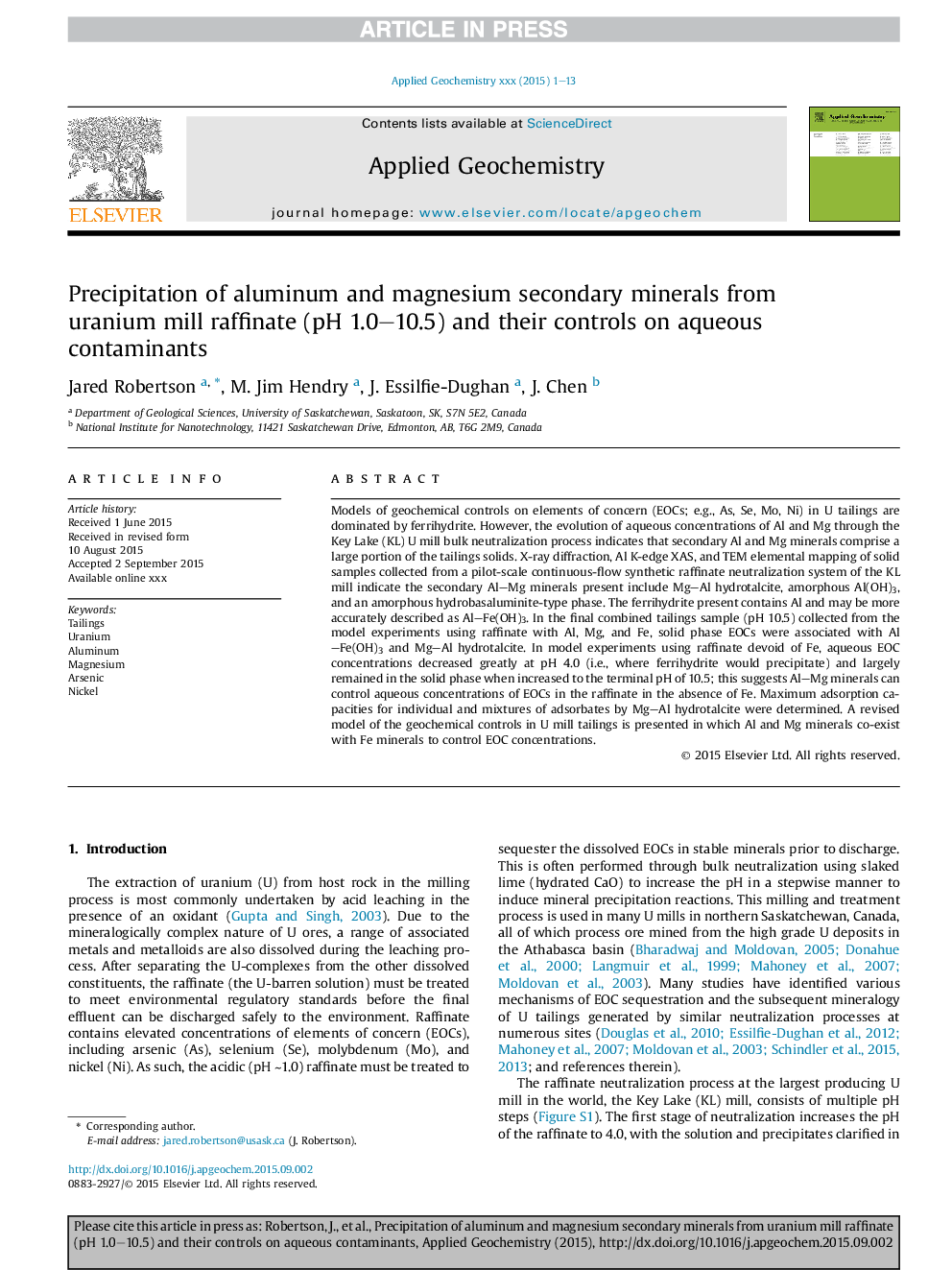| Article ID | Journal | Published Year | Pages | File Type |
|---|---|---|---|---|
| 6334854 | Applied Geochemistry | 2016 | 13 Pages |
Abstract
Models of geochemical controls on elements of concern (EOCs; e.g., As, Se, Mo, Ni) in U tailings are dominated by ferrihydrite. However, the evolution of aqueous concentrations of Al and Mg through the Key Lake (KL) U mill bulk neutralization process indicates that secondary Al and Mg minerals comprise a large portion of the tailings solids. X-ray diffraction, Al K-edge XAS, and TEM elemental mapping of solid samples collected from a pilot-scale continuous-flow synthetic raffinate neutralization system of the KL mill indicate the secondary Al-Mg minerals present include Mg-Al hydrotalcite, amorphous Al(OH)3, and an amorphous hydrobasaluminite-type phase. The ferrihydrite present contains Al and may be more accurately described as Al-Fe(OH)3. In the final combined tailings sample (pH 10.5) collected from the model experiments using raffinate with Al, Mg, and Fe, solid phase EOCs were associated with Al-Fe(OH)3 and Mg-Al hydrotalcite. In model experiments using raffinate devoid of Fe, aqueous EOC concentrations decreased greatly at pH 4.0 (i.e., where ferrihydrite would precipitate) and largely remained in the solid phase when increased to the terminal pH of 10.5; this suggests Al-Mg minerals can control aqueous concentrations of EOCs in the raffinate in the absence of Fe. Maximum adsorption capacities for individual and mixtures of adsorbates by Mg-Al hydrotalcite were determined. A revised model of the geochemical controls in U mill tailings is presented in which Al and Mg minerals co-exist with Fe minerals to control EOC concentrations.
Related Topics
Physical Sciences and Engineering
Earth and Planetary Sciences
Geochemistry and Petrology
Authors
Jared Robertson, M. Jim Hendry, J. Essilfie-Dughan, J. Chen,
